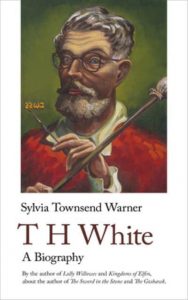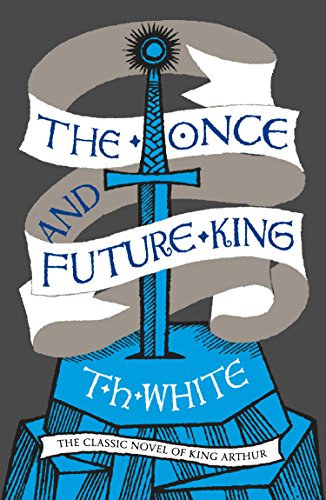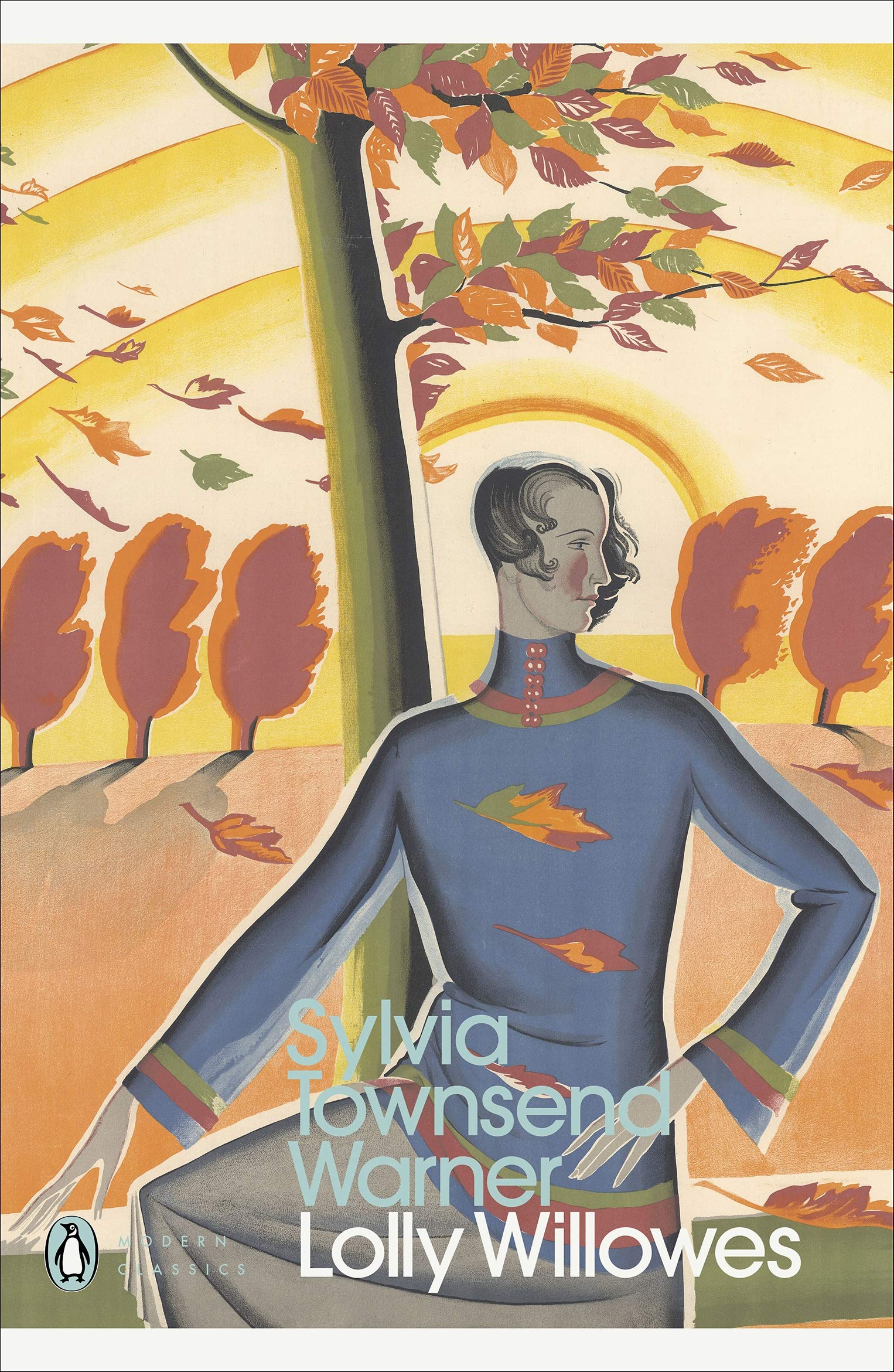T H WHITE: A BIOGRAPHY by Sylvia Townsend Warner (BOOK REVIEW)
Sylvia Townsend Warner – T H White: A Biography (1967, Handheld Press edition 2023)
“In fact, The Sword in the Stone had allowed him two wish-fulfilments. He gave himself a dauntless, motherless boyhood; he also gave himself an ideal old age, free from care and the contradiction of circumstances, practising an enlightened system of education on a chosen pupil, embellished with an enchanter’s hat, omniscient, unconstrainable and with a sink where the crockery washed itself up.”
Although perhaps less widely read today, T H White’s The Once and Future King (omnibus 1958, but individual volumes The Sword In The Stone published in 1938, The Witch In The Wood 1939, and The Ill-Made Knight 1940) is an enduring Fantasy classic that is responsible for multiple generations of readers falling in love with the story of King Arthur, and in many ways it remains the most loved interpretation of those stories. Alongside Tolkien’s The Lord of the Rings it was a hugely influential text on the burgeoning Fantasy genre. And thanks to the enduringly popular Disney adaptation of The Sword In The Stone (1963), White’s vision of the young King Arthur and his wise mentor Merlyn casts a long shadow over genre and fandom. Sylvia Townsend Warner, the author of Lolly Willowes (1926) and Kingdoms of Elfin (1977), was approached to write the biography of T H White following White’s death in 1964, as White greatly admired her work. The resulting book, T H White: A Biography (1967) is a remarkable account of the life and work of the author of the beloved fantasy classic. Working extensively with White’s notes and correspondences and speaking with friends and colleagues who survived him, Warner provides a nuanced portrait of White as an artist and as a human being. Thus her biography of T H White is a fascinating study of a troubled man and his frequently inspiring artistic work, as well as an excellent demonstration of how Warner brings her novelistic skills to bear on the art of nonfiction writing. As such it is essential reading for fans of either author. Originally published in 1967 but out of print for many years, Handheld Press do an excellent job bringing this wonderful biography back into print, with the gorgeous cover art and design, plus extensive academic notes and informative introduction by White and Warner expert Gill Davies, as we’ve come to expect from them.
Warner follows White’s life from his birth in Bombay to a District Superintendent of Police and the daughter of an Indian judge through his unhappy childhood in Cheltenham to his education at Cambridge to his countryside life in Stowe where he wrote The Sword in the Stone, to his tax exile in Ireland and then Alderney and his final years in Florence and Naples and then the USA. Throughout Warner brings her novelist’s eye for narrative and gorgeous prose to White’s life, resulting in a biography with unusually beautiful writing and a strong sense of narrative line, which winds up being very well suited to White’s life. Although the two of them never met, Warner uses White’s own diaries, writings and correspondence alongside testimonies from people who knew him to build up such a believable portrait of the man that by the end of the biography one feels that one knows White personally. Warner is judicious in her editing and presentation, focusing on the key moments that shaped White’s life and his literary vision, frequently bringing White’s own voice to the fore so that he can speak for himself.
 However this is as far from an uncritical regurgitation of the artist’s own view of himself as could be. Warner approaches White with warmth, humour and dignity, and clearly a great deal of respect for his work, but she suffers from no delusions about him. White was frequently a difficult person, his traumatic upbringing and deeply repressed homosexuality shaping a frequently unhappy man who had difficulty forming lasting connections with others. Indeed the central relationship in White’s life winds up being that with his red setter Brownie. Warner approaches the man’s shortcomings with sympathy but clarity, talking frankly about the alcohol dependency which he struggled with for his adult life and his tendency to alienate even his close friends. Warner treads the balance of celebrating White’s positive qualities – his exuberance, his love of animals, his charm, his undeniable talent – whilst at the same time never shying away from honestly showing the more frustrating aspects of White’s character.
However this is as far from an uncritical regurgitation of the artist’s own view of himself as could be. Warner approaches White with warmth, humour and dignity, and clearly a great deal of respect for his work, but she suffers from no delusions about him. White was frequently a difficult person, his traumatic upbringing and deeply repressed homosexuality shaping a frequently unhappy man who had difficulty forming lasting connections with others. Indeed the central relationship in White’s life winds up being that with his red setter Brownie. Warner approaches the man’s shortcomings with sympathy but clarity, talking frankly about the alcohol dependency which he struggled with for his adult life and his tendency to alienate even his close friends. Warner treads the balance of celebrating White’s positive qualities – his exuberance, his love of animals, his charm, his undeniable talent – whilst at the same time never shying away from honestly showing the more frustrating aspects of White’s character.
Warner also proves herself an adept critic of White’s wonderful but frequently erratic writing. As it should be, White’s career as a writer is front and foremost in this biography, and Warner approaches his oeuvre as she approaches the man, with both enthusiasm for his artistic triumphs but with a sharp eye for when his writing just doesn’t work. She is brilliant on The Once and Future King, capturing the joy and brilliance that exudes from The Sword in the Stone and highlighting how White saw his own character reflected in Lancelot’s in The Ill-Made Knight. Despite the vast differences in how they saw and interacted with animals, she celebrates the literary brilliance of The Goshawk (1951), White’s account of his failed attempt to tame a hawk, which demonstrates both his love and fascination with animals and his deep-seated need to control them. She is equally as perceptive when discussing his failures, such as the final Once and Future King book The Book of Merlyn (1977), published posthumously, or White’s ill-fated attempts to write Candle in the Wind, the final entry in the published Once And Future King omnibus, into a play. Warner has an excellent sense of what makes White’s writing so wonderful but also where he tends to fall down or overreach himself. Nevertheless she approaches even his failures with great generosity of spirit, even highlighting a small part of The Book of Merlyn which she found particularly effective despite its surroundings.
Warner’s biography of T H White is a triumph. It is a joy to read, and it has rekindled my passion for the writing of both Warner and White. I intend to follow it by rereading The Once And Future King, and by reading more of Warner’s own works. It is a beautiful work that is sure to be of immense interest for fans of either White or Warner, and an absolute delight for those of us who are fans of them both.



